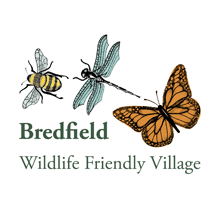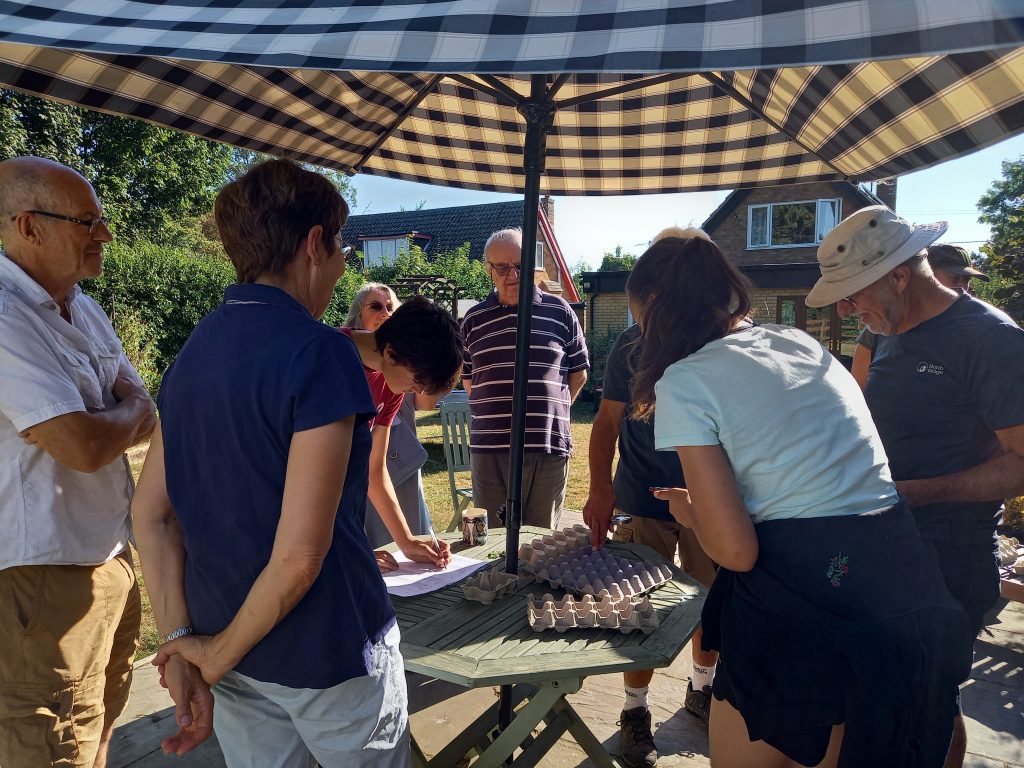
Examining and recording the moths
On 13th August 2022, Bredfield Wildlife-friendly Village held its first Moth Morning. The night before, Max and Stewart set-up their moth traps in the garden of Bumbles. People were invited to come at 8am the next morning to see what moths had been caught.
In the middle of a long dry and hot period, and with a Harvest Moon lighting up the night, it didn’t look auspicious for moths. An overcast and sultry night is the best condition for moth-trapping. The evening before, I had been informed that Sutton Hoo had set up a moth trap for visitors and had caught just one moth! Despite, the somewhat adverse conditions, we still managing to trap, examine and release 81 moths of 27 species.
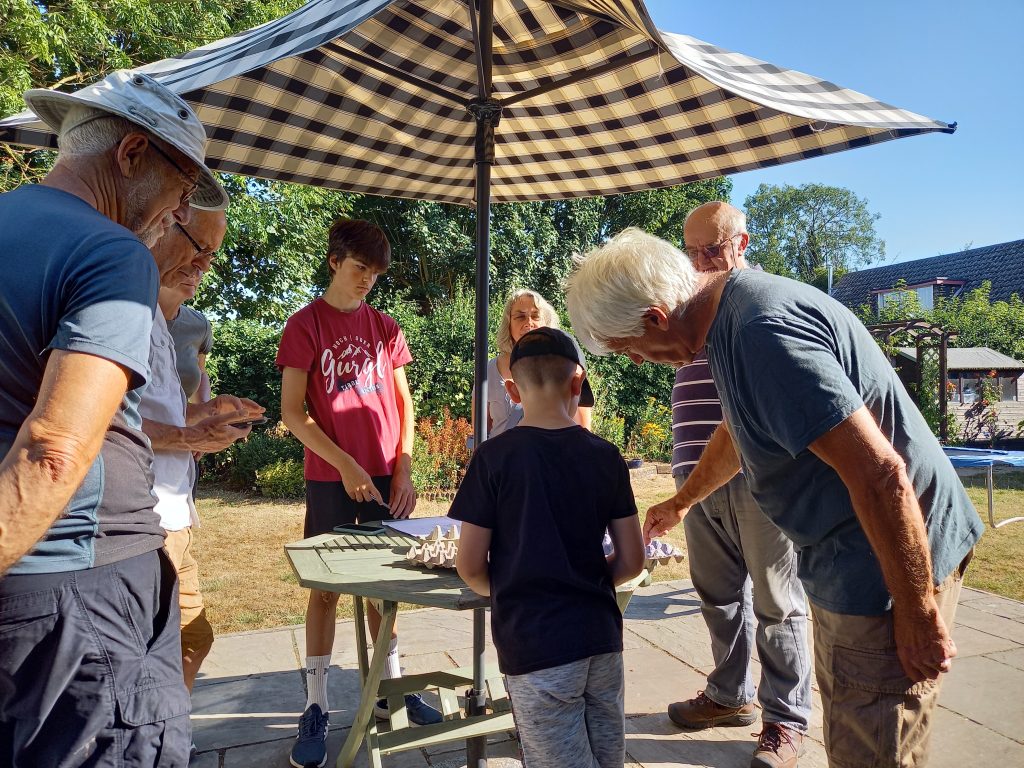
Learning about moths
A dozen people or so were in attendance over the morning. The session began with an explanation of what moth-trapping is all about. Because of their nighttime habits, it is difficult for scientists and conservationists to study moths. They are assisted by many individuals, up-and-down the country, trapping moths and submitting their records. Citizen Science in action.
Moth traps are basically a box, stuffed full of egg boxes, with a light on top. (They can be bought, purpose-made, or, if you have Max’s skills, you can make one yourself.) Moths are attracted to the light and, via a basic perspex ‘funnel’, they fall into the trap and hide away amongst the egg boxes. Presumably, the egg boxes simulate bark recesses where the moth can hide with a sense of safety. Come the light of morning, most of the moths are roosting. The egg boxes can be removed and examined to see what has been trapped overnight. It’s like opening a box of chocolates! Inevitably, some will fly off before they’ve been examined, but most of the moths behave themselves. Once examined and recorded, all the moths can be left to fly-off at their convenience.
As we examined and photographed the moths, we talked about the interesting names they have: Setaceous Hebrew Character, Shuttle-shaped Dart, Flounced Rustic, Bird-cherry Ermine, and so on. Sometimes these names are descriptive or derived from a fancied likeness; sometimes they are named after the plant which the larvae feed on; or they could be derived from heraldry, mythology, occupational classes, military ranks or even weapons!
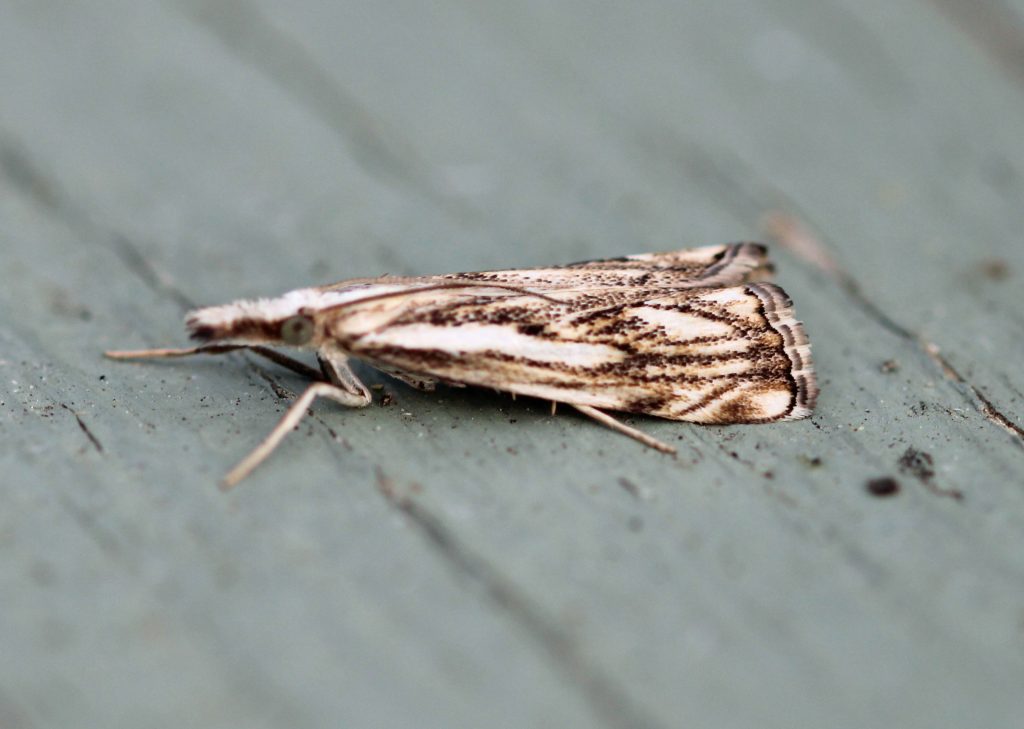
Chequered Grass Veneer 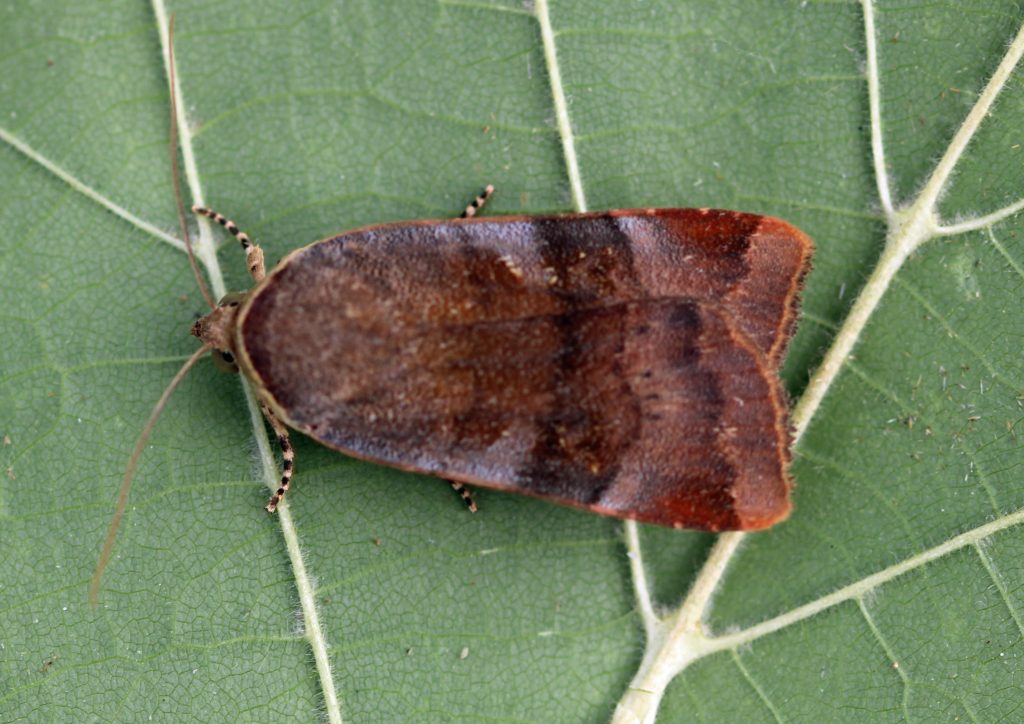
Lesser Broad-bordered Yellow Underwing 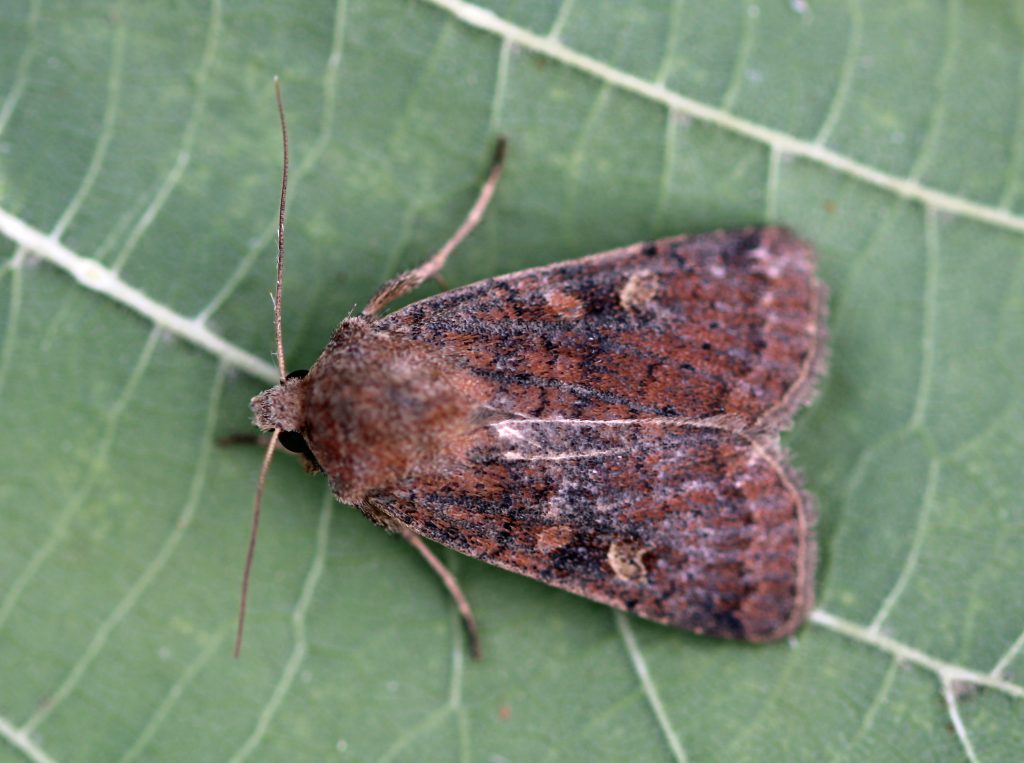
Square-spot Rustic
It was the wrong time of the year to trap some of the larger and attractive moths, such as the Elephant Hawk-moth. Instead, we managed to catch several tiny micro-moths, including those small grass moths or ‘veneers’ that often fly-up when you walk over grass, only to apparently disappear from sight. Three examples of the species that we trapped are shown above.
We were lucky to have several younger people attending. Youngsters are often the best attendees to have at such events – a whole hidden world is revealed to them. Next year, we will hold another Moth Morning, but earlier it the year, when the Hawk-moths are around. Hawk-moths are amenable to gentle handling, and children (and many adults) are fascinated to hold them.
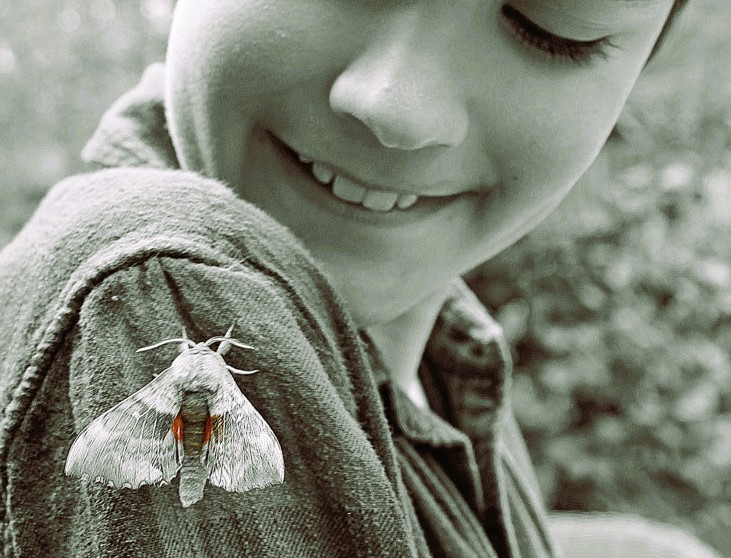
Poplar Hawk-moth riding on a shoulder!
Events such as our Moth Morning are a great way to encourage engagement with nature. The Bredfield Wildlife-friendly Village project aims to encourage pro-nature actions – such as wildlife-friendly gardening. Without nature-engagement, people are surely less-likely to engage in pro-nature actions. We would encourage all wildlife-friendly communities to give it a go.
